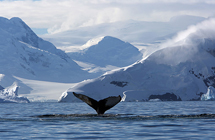亚洲冰川将流失1/3 恐影响数百万人
|
Asia’s mountain glaciers will lose at least a third of their mass through global warming by the century’s end, with dire consequences for millions of people who rely on them for fresh water, researchers have said. This is a best-case scenario, based on the assumption that the world manages to limit average global warming to 1.5C over pre-industrial levels, a team wrote in the journal Nature.
“To meet the 1.5C target will be a task of uNPRecedented difficulty,” the researchers said, “and even then, 36% (give or take 7%) of the ice mass in the high mountains of Asia is projected to be lost” by 2100. With warming of 3.5C, 4C and 6C respectively, Asian glacier losses could amount to 49%, 51% or 65% by the end of the century, according to the team’s modeling study. The high mountains of Asia comprise a geographical region surrounding the Tibetan plateau, holding the biggest store of frozen water outside the poles. It feeds many of the world’s great rivers, including the Ganges, the Indus and the Yarlung Zangbo River, on which hundreds of millions of people depend. Nearly 200 nations adopted the Paris agreement in 2015, which sets the goal of limiting warming to a level “well below” 2C, while “pursuing efforts” to achieve a lower ceiling of 1.5C. Earth’s surface has already warmed by about 1C, according to scientists. For high warming scenarios, experts predict land-gobbling sea-level rise, worsening storms, more frequent droughts and floods, species loss and disease spread. The Asian high mountains, the new study said, were already warming more rapidly than the global average. A global temperature rise of 1.5C would mean an average increase in the region of about 2.1C, with differences between mountain ranges – all of which will warm by more than 1.5C. The Hindu Kush mountain range would warm by about 2.3C and the eastern Himalaya Mountains by 1.9C, the study forecast. “Even if temperatures stabilize at their current level, (glacier) mass loss will continue for decades to come,” the researchers added. For the high mountain glaciers to survive, “it is essential to minimize the global temperature increase”. Swaths of south Asia and China depend on meltwater from Himalayan glaciers for drinking water, electricity generation and irrigation. A study in July in the journal Nature Climate Change said there was only a 5% chance of holding global warming under 2C. For 1.5C, the odds were about 1%. On current trends, some experts project Earth is on track to warm by about 3C. |









